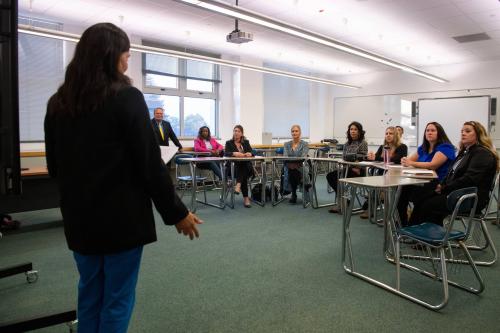Today in universities and offices across the country writers are using cloud-based platforms to collaborate on projects. Cloud apps, like Google Docs, incorporate the features of a word processor with social media tools including chat and comments that facilitate the creative process. This enables users of cloud services to work simultaneously on the same document without requiring physical proximity. Despite all of these features cloud applications are not widely used in classrooms.
Why don’t schools use more technology?
Schools face two main challenges when adopting new education technologies. First, technology is costly to deploy for resource-strapped districts. This includes the costs of devices, internet bandwidth, associated infrastructure, and technical support. Second, educators may remain skeptical about incorporating new technologies into their instruction or lack the training to use it properly.
Benefits of Google Docs
Nonetheless, Google Docs seems to provide several notable benefits in the classroom compared to traditional means of writing. A recent study examined the use of Google Docs at four middle-schools in Littleton, Colorado. The authors investigated the advantages of using Google Docs for instruction and what factors help to promote the adoption of cloud-based applications. English Language Arts teachers, literacy coaches, school administrators and students completed interviews and surveys on their computer usage and attitudes about using Google Docs. The researchers also analyzed the written works created by students and observed teacher lessons that utilized Google Docs.
Google Docs has many features that strengthen its utility as a teaching tool. The comment system allows students to provide clear feedback. It automatically generates a chronological list of edits by different students. In addition, the owner of a document can set access privileges and choose which other students may edit or read documents. Students and teachers preferred Google Docs compared to paper or word processors because of these features. The commenting and revision systems baked into Google Docs support collaboration between peers. Teachers used the revision history to provide targeted feedback to students. In addition, the revision history and access privileges promoted a meritocratic system where students were given credit for their work.
Students could access their projects quickly on any Internet connected device. Students and teachers spent less time organizing sheets of paper and more time writing. In addition the clear and actionable feedback from their peers and teachers also encourage a greater volume of writing and editing. The researchers found that students in Littleton were producing three or four pages over the course of the year. Other research has found that middle and high school students write as much as a page less using paper or traditional word processing software.
Long-term money saver
One of the main benefits of cloud-based platforms are lower costs over the long-term. Cloud platforms like Google Docs are free to use. Google stores the applications and data on their servers which limits costs. Administrators in Littleton didn’t need to purchase additional servers, which they believed saved the district about $100,000 during the year of study. The district has also saved on technical support. The number of Internet connected devices nearly doubled in Littleton when the district purchased a netbook for every student. They purchased the netbooks in part so that every student could use Google Docs simultaneously. Despite the large increase in the number of devices, the district didn’t need to hire any more IT staff. The simple but powerful machines relied entirely on cloud services. Google and other companies provided support and maintenance for free. After paying for Internet access, infrastructure and labor, cloud services save money.
Applying lessons from Littleton
The Littleton School District differs from other communities across the country in important ways. Littleton is a middle-class suburb with relatively low poverty (20 percent eligible for free and reduced price meals) and a predominantly white student body (81 percent). Students rarely lacked access to a computer—99 percent of students reported access to a computer at home, and every student had access to netbooks while in school.
This study doesn’t address technical and infrastructure barriers encountered by many low-income districts. Lack of investment in these resources is a real—but solvable—barrier to leveraging the value of education technology. A more serious concern is the cost of comprehensive curriculum reform that includes the usage of cloud-based tools. The story in Littleton should build policymakers’ confidence that incorporating cloud application tools into curriculum is a worthy strategy.
Google is a donor to the Brookings Institution. The findings, interpretations, and conclusions posted in this piece are solely those of the authors and not influenced by any donation.





Commentary
Why don’t schools use the cloud? It’s worth the challenge
September 2, 2016